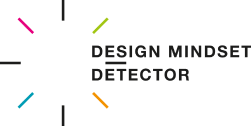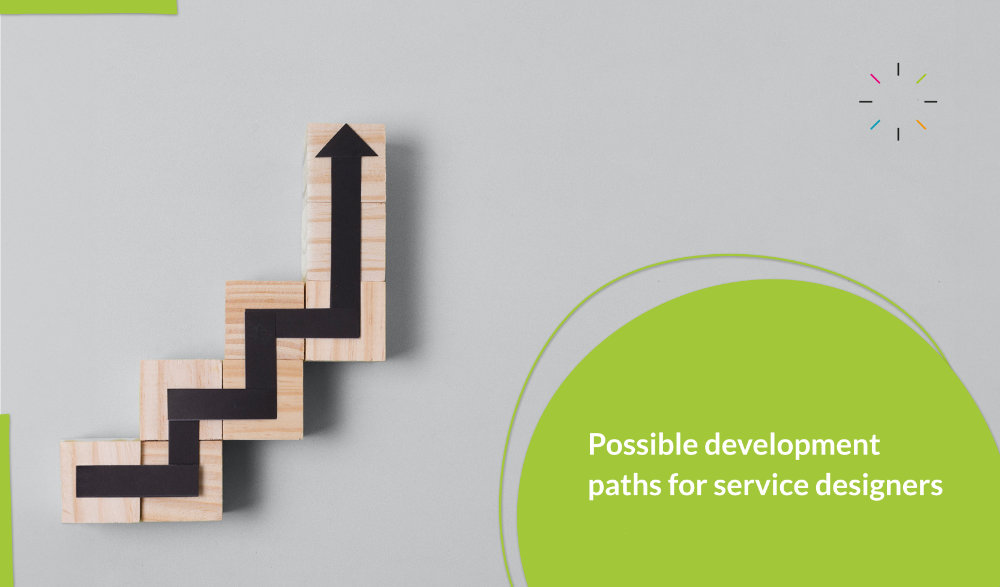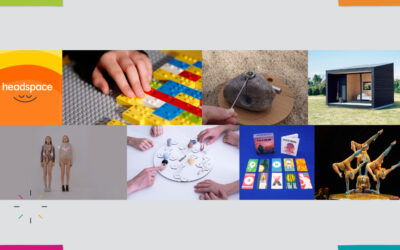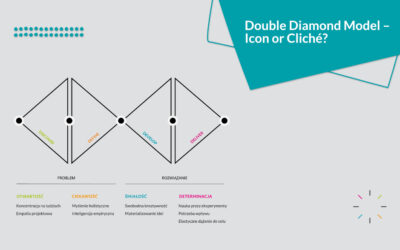Careers in service design are often full of uncertainty. The beginnings can be complex and demanding. Aspiring service designers typically need to demonstrate great determination and consistency in acquiring the right education and experience, and then arm themselves with patience in finding the right job. As a result, landing a service designer position can feel like reaching the summit. However, in practice, it is usually just the beginning of a professional journey.
Read also: UI/UX designer – who are they and how to become one?
Development paths for service designers
Since service design in Poland is still maturing, information on established career development paths for service designers is limited. Few professionals can boast a decade of experience in this position.
Therefore, based on local observations and international data on the work of service designers, I propose the following potential career development directions for specialists in this field.
1. Climbing the organizational hierarchy
In the career development path of a service designer, it is possible to advance from a junior position, through mid-level, senior specialist, to manager, and eventually to Chief Design Officer.

Choosing this path allows designers to achieve greater independence in their design activities, taking on increasing responsibility for themselves, their team, and business goals. With promotion, the design practice may evolve towards a more administrative and strategic role. This type of career is most common in corporations that develop their own design teams, such as banks, insurance companies, or telecommunications firms.
Choosing this path, in addition to standard service design skills, also requires qualifications in managing design teams, project management, and strategy formulation and implementation.
2. Exploring narrow paths of specialization in service design

Following this path involves focusing on practicing service design in a chosen domain. Designers specializing in a given field become experts in their specialization. There are many popular directions of specialization in service design, such as:
- Subject areas: circular economy, healthcare, smart cities, finance, and banking.
- Technologies: artificial intelligence (AI), fintech, virtual reality.
- Design approach: speculative design, future design, behavioral economics.
Having a specialization allows designers to work on complex and innovative projects, often related to research and development (R&D). Such roles are often offered in design agencies that strategize on specialization, large manufacturing companies, and social institutions.
If you choose this path, it is important to have domain knowledge and keep up with its development. You must be able to use scientific materials, various specifications, and communicate with domain experts. Acquiring skills related to a given specialization is also essential to effectively design services in this specific area.
3. Navigating broad highways

Following this path means that designers are open to carrying out projects from various domain areas. Their specialization is process-oriented, involving delivering value through selected processes, such as research, co-creation workshop facilitation, visualization, or education – supporting clients in developing design skills.
To work this way, designers must be proficient in implementing the chosen process and regularly familiarizing themselves with new methods or techniques. Navigating broad highways often leads to the development of proprietary tools or practices.
If you choose this path, you must be proficient in using various methods, techniques, and processes in different contexts. You must also be able to work in multidisciplinary teams and communicate effectively.
Check also: Personal development – where to start?





